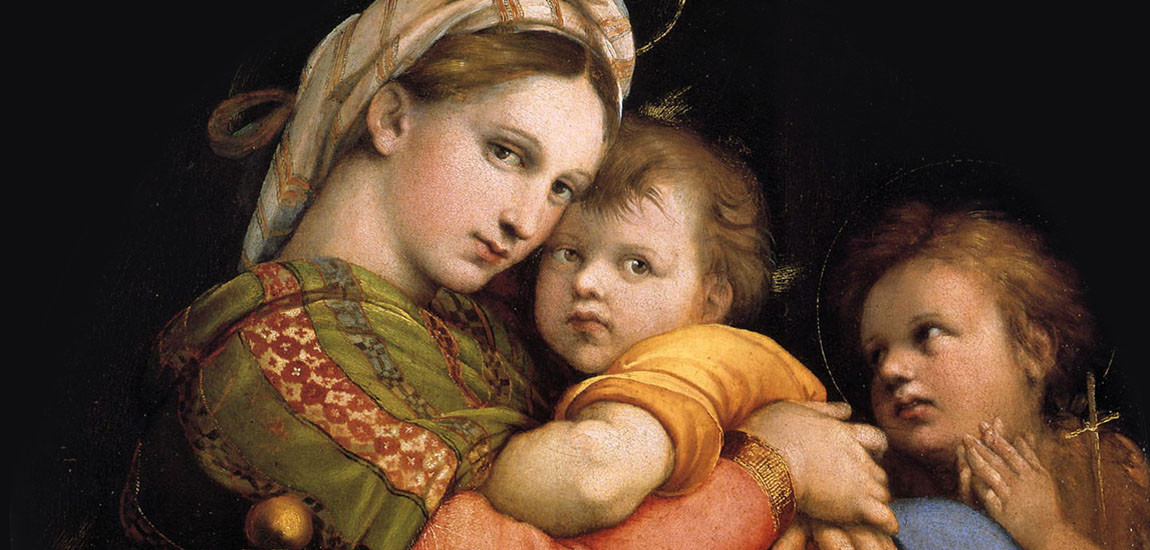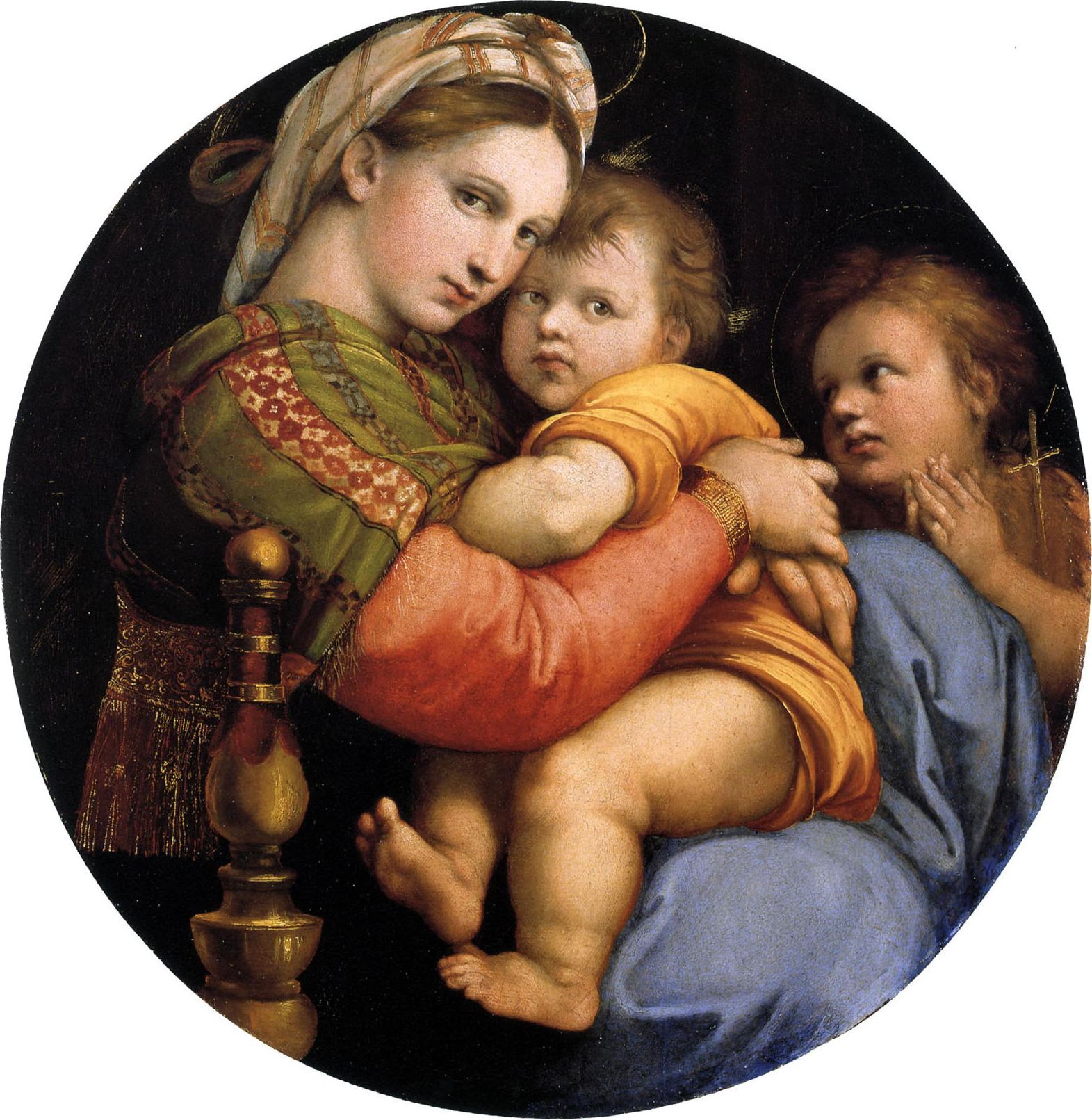
A loving mother: Raphael's Madonna della Seggiola
Raffaello Sanzio died
very young, he was only 37, but in his short life he managed to establish
himself as one of the most outstanding artists of the Renaissance, capable of masterfully interpreting a timeless ideal
of beauty and harmony.
One
of his greatest masterpieces is the Madonna della Seggiola, painted in
oil between 1513 and 1514, depicting Mary holding the Child in her arms and in
the background a young Saint John intent on watching the scene in adoration.
The
title derives from the elegant golden chair on which Mary is sitting and the
format of the table suggests the private commission of the painting, perhaps for
Pope Leo X.
It
has been in the Medici collections since the first half of the sixteenth century
and is now at Palazzo Pitti, in the Saturn Room of the Palatine Gallery.
The scene is incredibly tender
and delicate: Mary holds the Child in her arms, keeping him
so close their heads touch, in a surprisingly maternal gesture, far from the
coldness of some of the Madonnas in the history of art.
The
position of the Virgin, with her leg bent and her head tilted forward, suggests
the typical rocking of a mother cuddling
her child.
Both
turn towards the viewer, Mary looks straight ahead, while the Child seems to be
looking towards a further point.
As
a matter of fact, the Madonna della Seggiola,
is the only other Madonna painted by Raphael, besides the Sistine Madonna (1513), that looks directly into the eyes of the
viewer.
This
gaze directed at the viewers invites
themto participate in the moment of tenderness and intimacy between mother and
child and makes them feel emotionally involved.
The
painting is extremely rich in details other than emotions: the golden
embroidery on the back of the chair which reflect the light, the decorations on
Maria's shawl, the studied combination of warm and cold tones, the first at the
center of the painting, the latter towards the edges of the panel, make this work
an undisputed masterpiece of Renaissance art.
According to some, Raphael portrayed a young peasant girl cradling her child, according to others it is actually the portrait of the Fornarina, a woman loved by the artist, who already served as a model for his Sistine Madonna. It comes natural to think that the painter may have personally known the woman in the painting and that he had a close relationship with her, considering the extreme sweetness with which he portrayed her, but in the end, a bit of mystery renders the artwork all the more fascinating.




